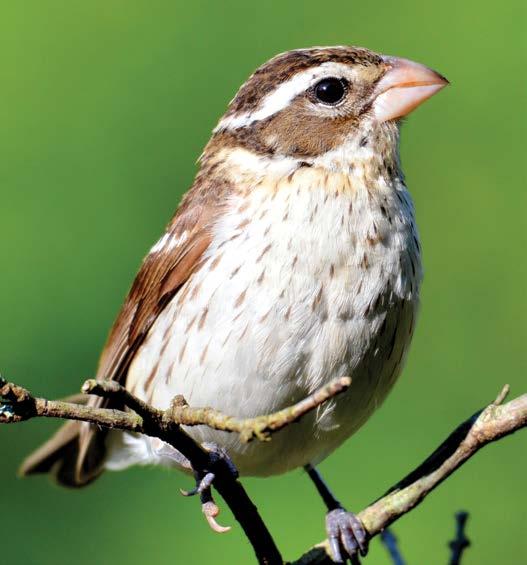
7 minute read
August in Nature
NATURE in AUGUST story and photos by Matt Perry
The warning call of the Rose-breasted Grosbeak is distinctive
Advertisement
Making the transition from July to August is always difficult for me. It is the time when most songbirds cease to sing and the summer soundscape is taken over by insects – primarily crickets, grasshopper, katydids, and cicadas. The changeover is a culture shock to me since I get so accustomed to knowing where birds are based almost entirely by their vocalizations. Deprived of the most obvious vocal clues, suddenly I must rely on visual sightings to confirm birds. That is not to say that birds become completely silent in the latter half of the summer; birds still vocalize, they simply stop using their breeding/ territorial songs. Warning calls, begging calls (given by hungry juveniles), and contact notes can still be heard, although deciphering these calls and assigning them to specific bird species can be problematic. For example, the begging calls of Yellow Warbler fledglings are remarkably like those given by Chestnut-sided Warblers, which are nearly identical to those given by American Redstarts. Also, the warning calls of Dark-eyed Juncos, Indigo Buntings, Field Sparrows, and Common Yellowthroats are all similar enough to cause some confusion or at least leave us with some doubt about who precisely we are hearing. Then again, some calls are highly distinctive and leave me with no doubt as to who is producing the sound. The rattling warning calls of the House Wren, the bright squeak call of the Rose-breasted Grosbeak, and the “chip-bur” call of the Scarlet Tanager are examples of bird sounds that are easy to assign to specific species. Juvenile Baltimore Orioles produce a three or four-note begging call that is also highly recognizable and when I hear it, I have no doubt who is asking to be fed in the branches above me.
There are lots of juvenile birds active in August especially in a habitat rich with food resources. Most of these young birds fledged in June and July and by early August they are busy honing their foraging and hunting skills. These birds will be migrating soon and their primary objective is to build fat reserves large enough to fuel their marathon southward journeys. Most of these songbirds have only a few

weeks to fatten up before heading to the tropics and to regions they have never seen before. Watching a Redstart family is somewhat like watching a small mixed flock containing multiple warbler species – their plumage varies that much! The plumage of the juvenile American Redstarts looks something like that of the adult female Redstart and not much like that of the adult male. The adult males have mostly black plumage with orange markings on the wings and tail, while the female and immatures are greenish with yellow markings. You can sometimes distinguish female immatures from male immatures by the presence of small black spots on the male’s throat. All Redstarts (regardless
Full line of contact lenses including multi-focal, toric and specialty lenses. Great Selections of Eyewear From
• Vera Bradley • Kate Spade • Cole Haan • Ronit Furst • Sperry • BeBe • Banana Republic • Liz Claiborne • Tommy Hilfiger • Lilly Pulitzer • Ray Ban
Safety & Sports Glasses and more!
Bossone’s Sausage & Meat Co. Utica’s Pork Store
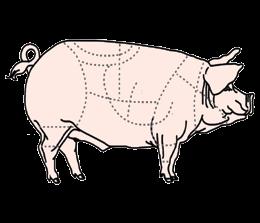
Try our Famous Sausage! Deli items • Beef • Steaks • Cheeses • Dry Goods Sundays: Fried Meatballs & Fried Dough! 711 Bleecker St., Utica (315) 765-6409 Open: Thurs & Fri 9-4, Sat 8-2, Sun 8-Noon
of plumage) show similar behavior when feeding. These insectivores flit around in the tree branches gleaning larva from leaves and nabbing flying insects in mid-air. Often while feeding they swish their tails from side to side. When they do this, they flare out their tail feathers, thus revealing colorful tail spots. These accent marks are orange in the adult male, yellow in the adult female, and either yellow or orange in immatures. Even as they forage for themselves, Redstart fledglings produce soft chattering begging calls. They do this to compel their parents to continue providing food. Redstarts do not sing often in August but sometimes you can hear a stray song or two from adults. Interestingly, with Redstarts, both the male and female produce songs. This sets them apart from most other migratory songbirds, where the male is the only singer in the family.
Some birds are late breeders and may still be found nesting late into August. American Goldfinches are notorious for their late nests. Often, they wait for their favorite food sources to go to seed before raising their families. That is smart planning! Territorial behavior between rival male goldfinches can make an otherwise placid meadow a very lively place. The males spar with each other while rocketing straight up over their contested territory. Cedar Waxwings may also breed late. Some of them seem to prefer waiting until the berry crop is at its peak before setting up housekeeping. A few songbird species raise as many as three broods during the summer (House Wren, Song Sparrow, and Common Yellowthroat) and they may be found rushing around trying to feed their broods well into August. All in all, August is a good month to look for birds and to observe novel behavior. I encourage everyone to go outside and try to see some of these birds before they leave for their wintering grounds. Don’t forget to bring binoculars. •


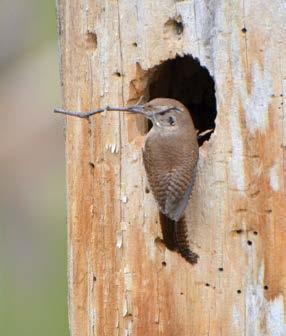
A House Wren begins construction of a cavity nest A Song Sparrow may raise three broods a single breeding season
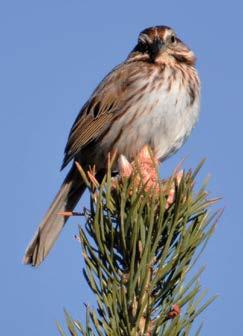
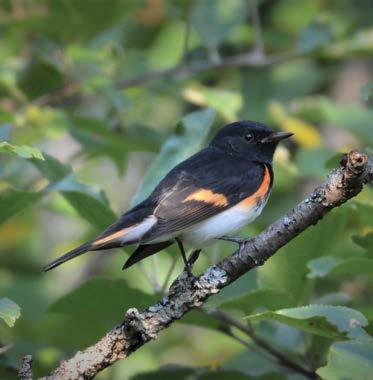
Adult male American Redstart
Personal, Business & Life Insurance Planning From a local company established in 1866 Turnbull INSURANCE SERVICE 600 French Road, New Hartford • 315.735.9201 www.turnbull-insurance.com
Kitchen & Bath Cabinets Hardwood Flooring & Countertops FREE In-Home Estimates Installation Available 315-822-0010 Corner of Rte. 8 & 20, Bridgewater Showroom Open Tues 11-6, Wed-Sat 11-4 or by appt. www.knottybynature.com

Cabinetry for Every Budget!
Over 40 years in Business
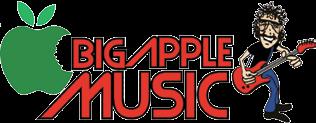
Lessons Repairs Layaway We're open! Thank you for supporting local businesses and keeping music alive!
Rentals LOWEST PRICES
Sheet Music School Instrument Rental Programs
Lighting New & Used Musical Instruments WE BUY USED EQUIPMENT SHOP LOCAL AND SAVE BIG! (315) 732-3502 8441 Seneca Turnpike, New Hartford www.bigapplemusic.net We Will Beat Any Catalog or Mail Order Price
TheGoldmineJewelers.com

315-736-0662 4662 Commercial Drive New Hartford
Mohawk Valley Living Board Game #2 Old Forge, NY
2-6 players. Needed: 1 die and any game pieces (or coins)
The player who reaches the red Finish circle first wins. You must roll an exact number to move your piece into the Finish circle.
Place all players game pieces in green Start circle. Each player rolls the die. The player with the highest number goes first and play proceeds clockwise (to the left). Player can choose to follow one of the two paths.
If you land on a green circle, follow the arrow.
If you land on a blue circle, roll the die and follow the instructions in the blue box for the corresponding number.
Forgot to sign in before your hike! Go back to trailhead.

If you land on the same circle as another player, send them BACK to the nearest yellow circle. If there is no yellow circle between player and Start, send to Start
If you land on the pink Calypso Cove circle play a game! Choose a number between 1 and 6. Each of your opponents (clockwise) must choose a different number. Roll the die. If you roll your number move AHEAD to the next yellow circle. If you roll an opponent's number move them BACK to the last yellow circle. If no yellow circle is between player and Start circle, send to Start. If no one chose the number rolled your turn is over.









